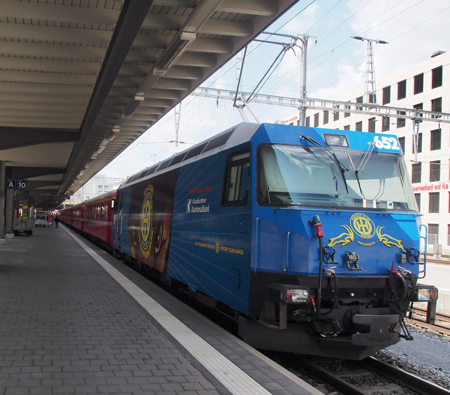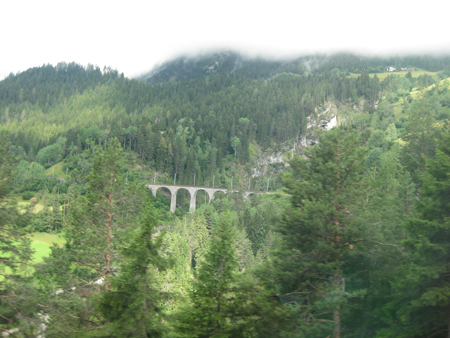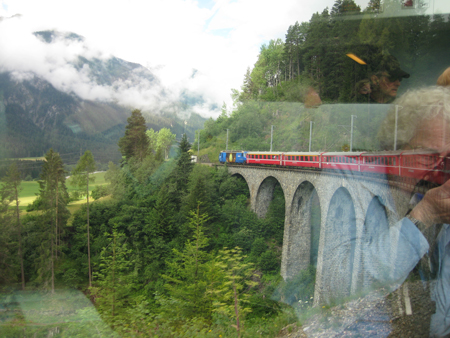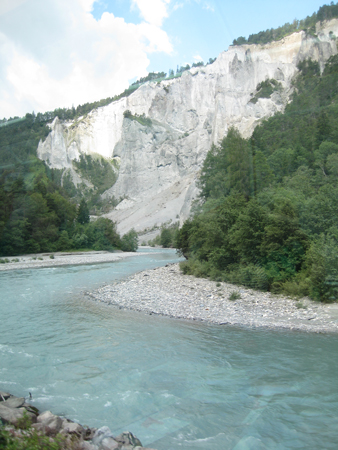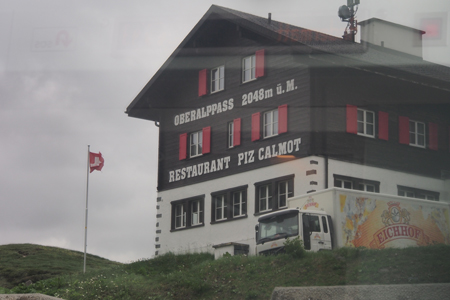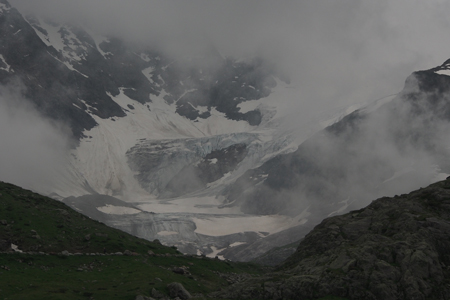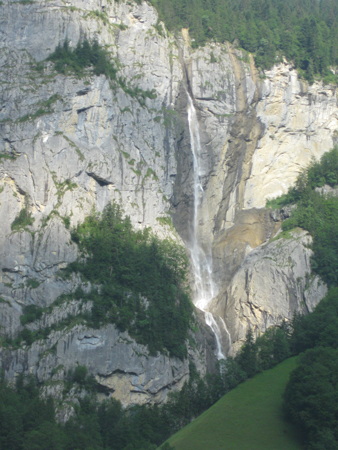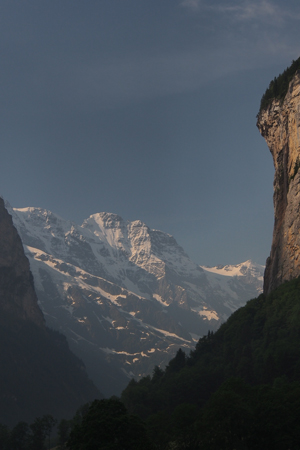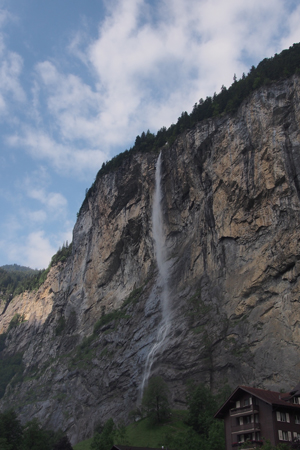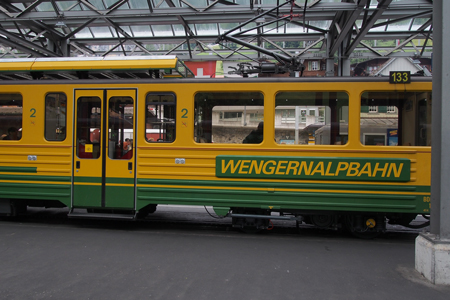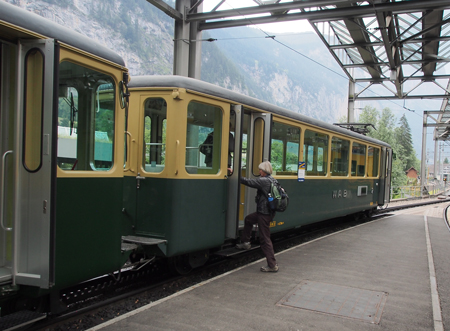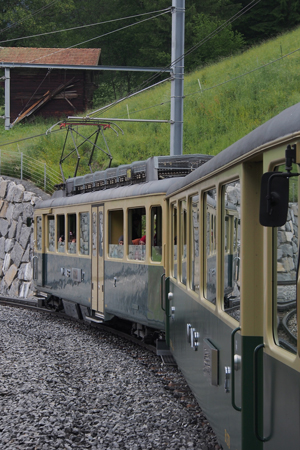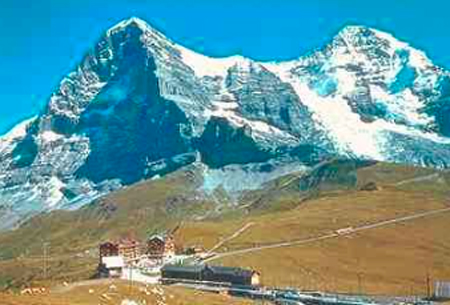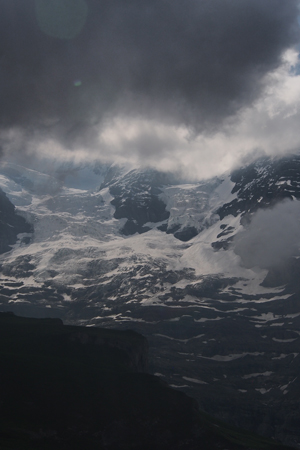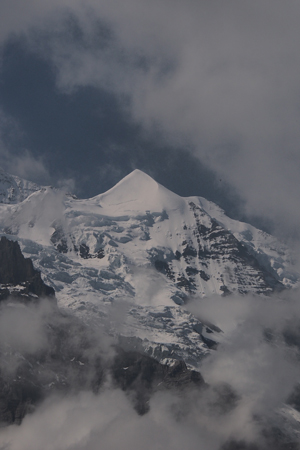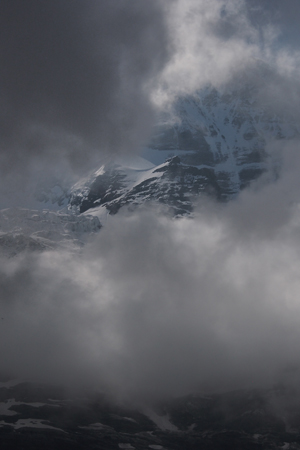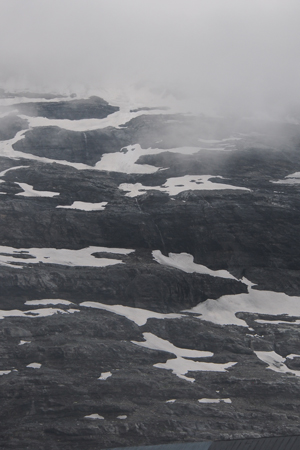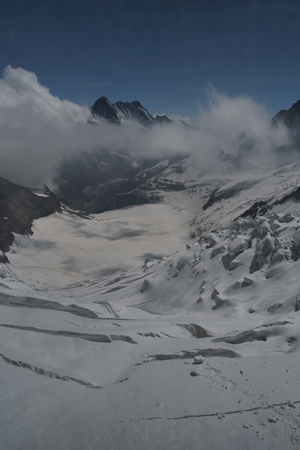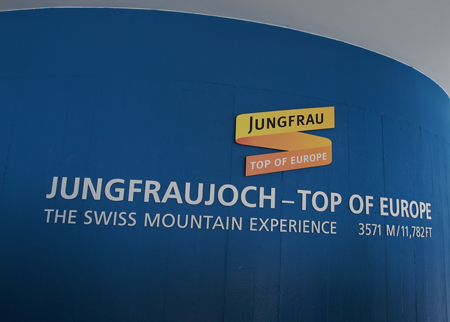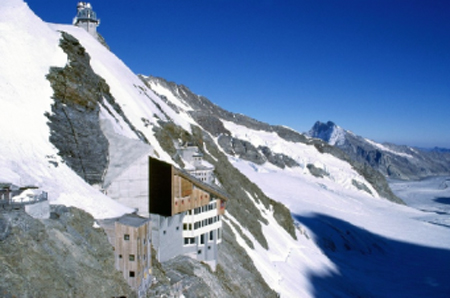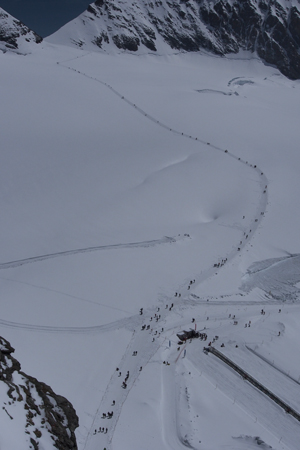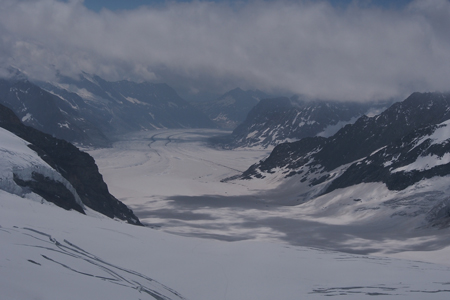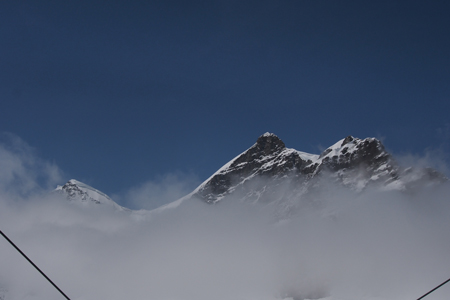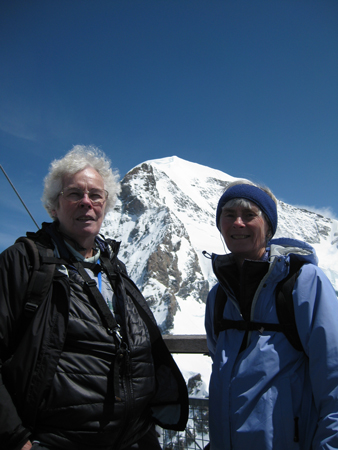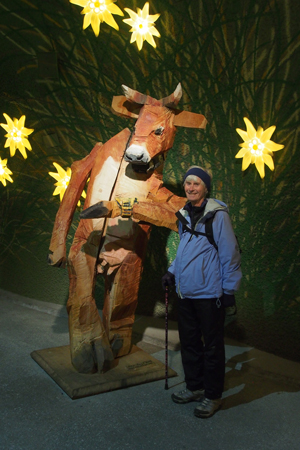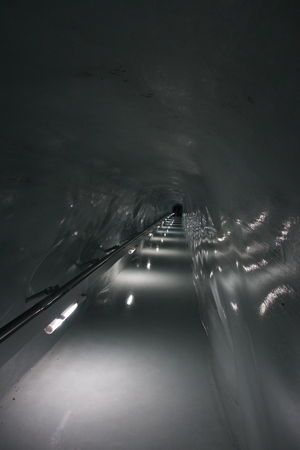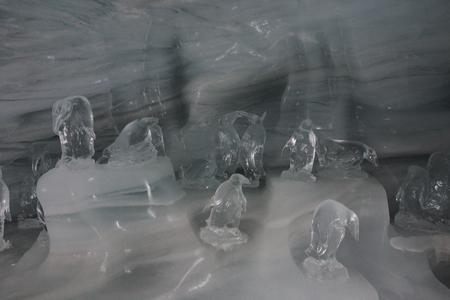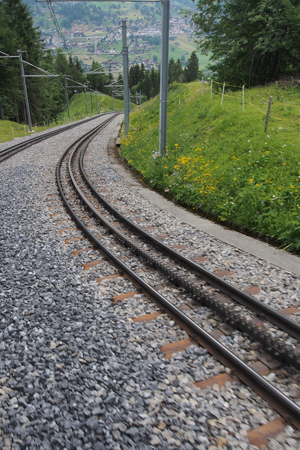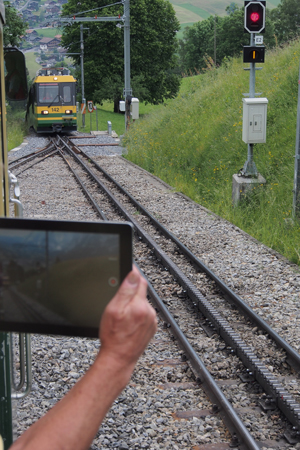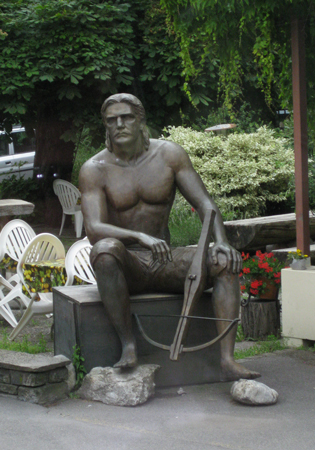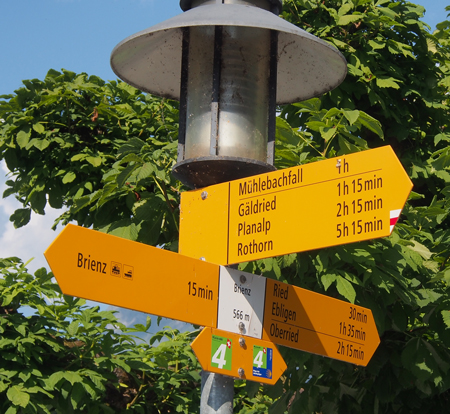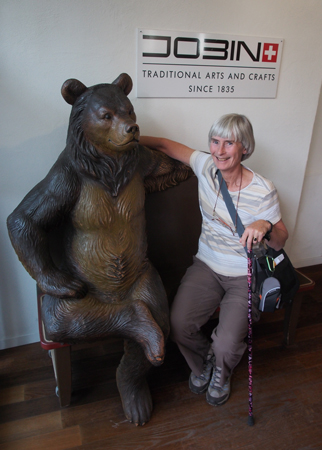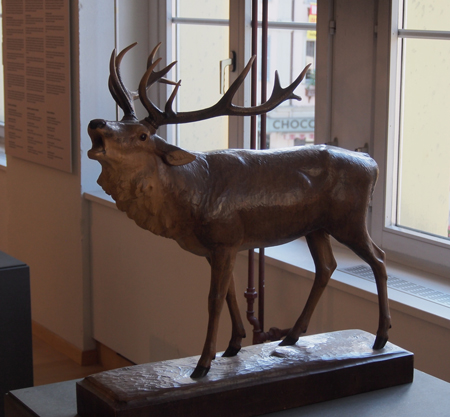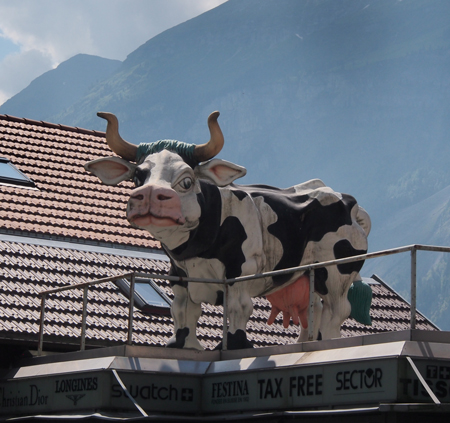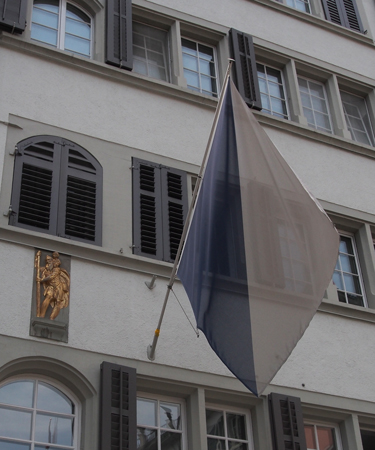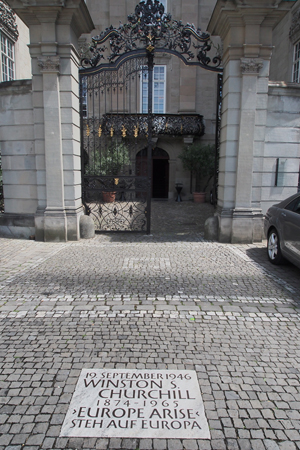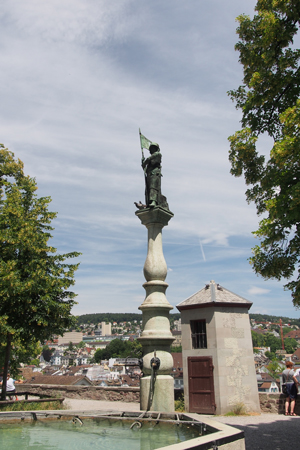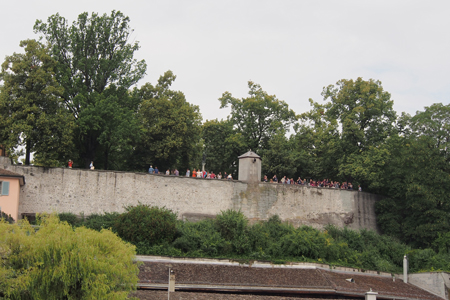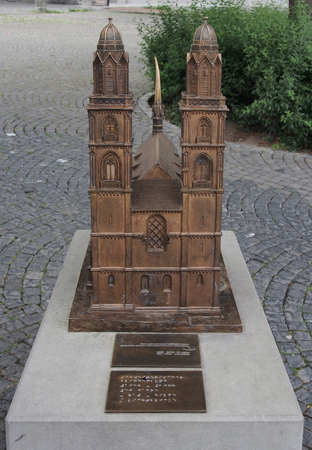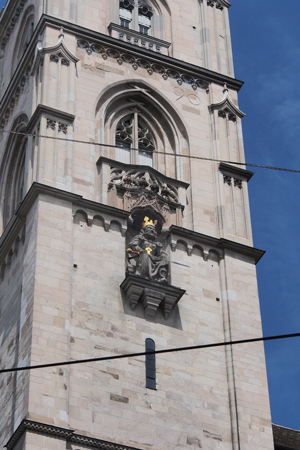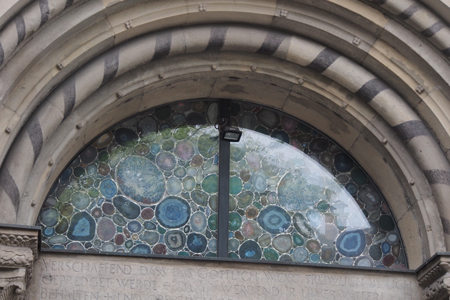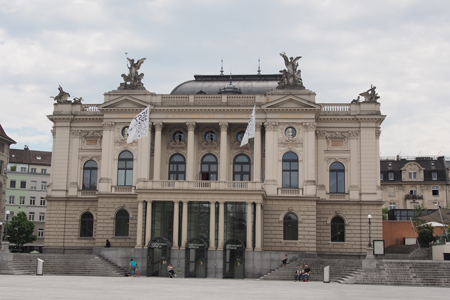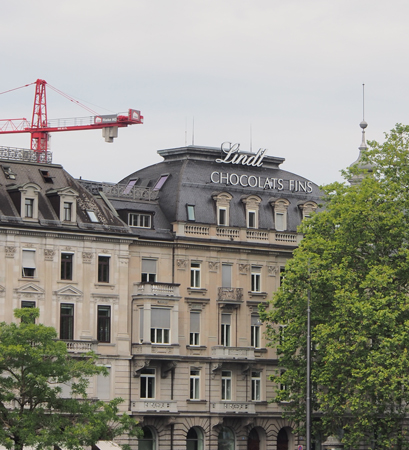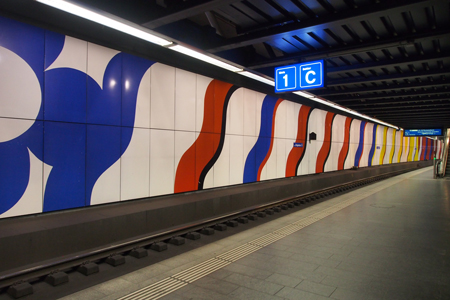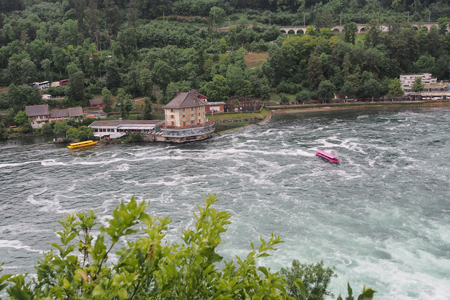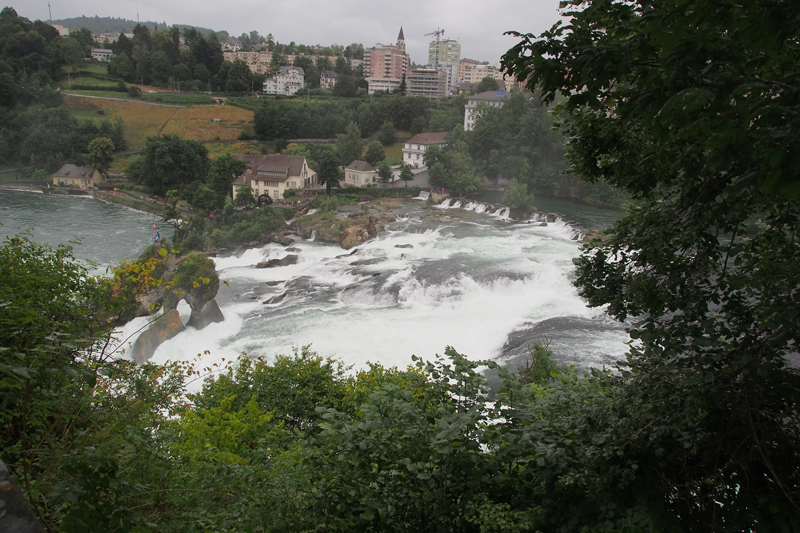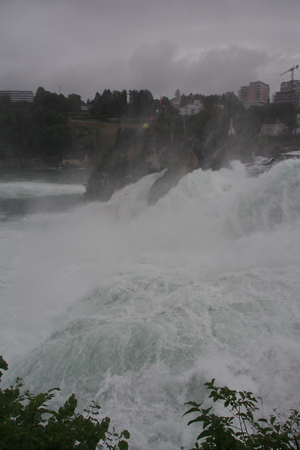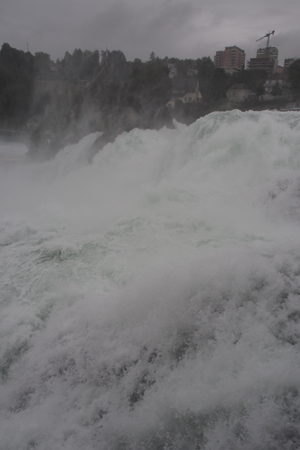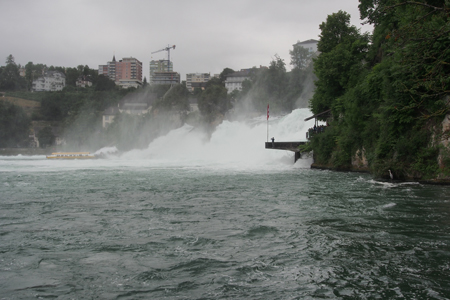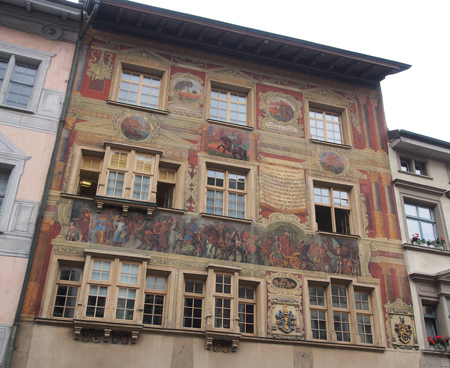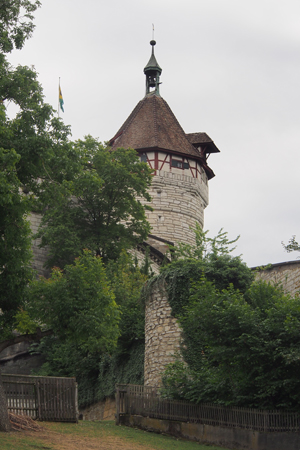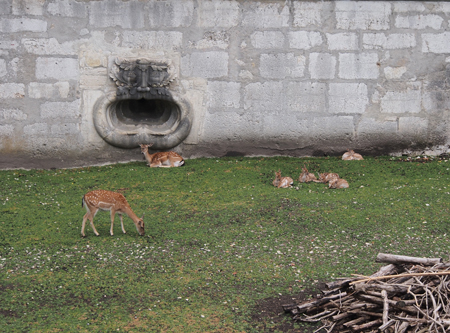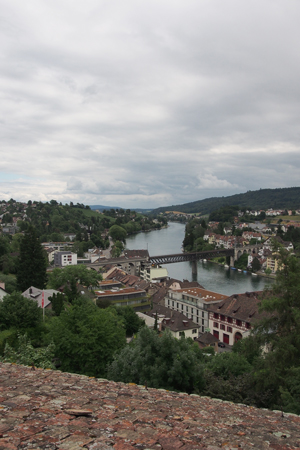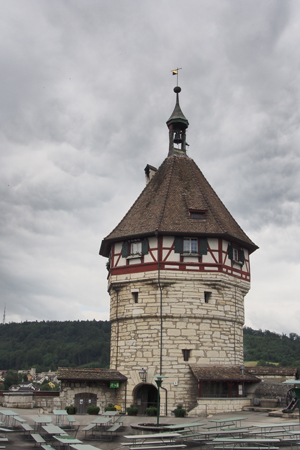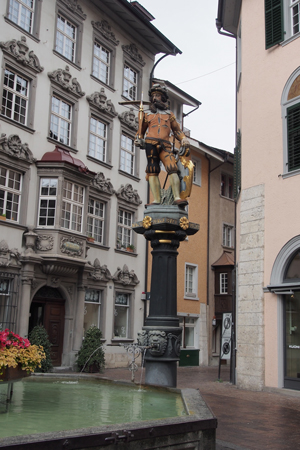Wed., 6/25/14 – St. Moritz to Interlaken
Today we rode the world famous Glacier Express Train, “the slowest express train in the world.” We boarded the train in St. Moritz. We climbed up 400 meters in just 5 km as the crow flies by going around three separate loops inside tunnels. After the stop at Filisur we crossed the Landwasser Viaduct high above the gorge and water below. On the way down to the town of Chur we passed several mountain fortresses and castles. Chur was a crossroad for several trade routes. Then we rode through the Rhine Gorge, described as a mini Grand Canyon. The river runs between cliffs of bizarre shapes and colors. At Disentis we switched engines to a rack-and-pinion engine to use the cog to get us up to Oberalppass and down to Andermatt where we got off. Some of the grades on this stretch were 12.5 %. The pass was at 2048 meters.
The Romans established several of these passes and were able to create routes over the gorge. We passed the town of Sedrum where the Swiss are creating a 57 km two bore tunnel that is to be opened by 2020 and be able to handle bullet trains traveling at speeds up to 250 km/mile.
The Glacier Express was a breathtaking journey across high mountain passes and viaducts, through deep curving tunnels and narrow gorges. The views were spectacular and the train ride comfortable and the cars had panoramic windows.
Glacier Express
|
Landwasser Viaduct |
Landwasser Viaduct - through the reflecting window |
Rhine Gorge
|
Oberalpass - from the train
|
We got back on our motor coach at Andermatt and rode over the zigzag road with hairpin turns (requiring both traffic lanes for our bus to make the turn) and with shear drop offs to cross the Susten Pass on our way to Interlaken. The Susten Pass, where we made a stop, is at 2200 meters and is at the foot of the Stone Glacier. The clouds descended on our way up to and over the Pass. Visibility was limited – perhaps a good thing given the nature of the road.
|
Stone Glacier |
Waterfall at Susten Pass
|
Tonight Insight Travel hosted a cocktail hour before our included dinner at the hotel – no Co-op meal tonight! We had a nice salad, roast pork with scalloped potatoes, and mixed frozen veggies. For dessert we had vanilla ice cream on stewed cherries. It was all good.
|
|
Thurs., 6/26/14 – Interlaken
|
|
Waterfall in the Grindelwald Valley
|
View from Lauterbrunnen |
Staubbach Falls
|
View from Lauterbrunnen |
We took the optional excursion to the Jungfraujoch – The Top of Europe. At Lauterbrunnen, we got on a cog railway. We changed trains at Kleine Scheidegg for the final ride up to the Jungfraujoch (11,333 feet). The first train gave us some views of the Eiger (13,026 feet), Monch (13,475 feet), and Jungfrau (13,642 feet) mountains and tremendous views of glaciers, meadows with flowers and cows, and villages far below us. At Klein Scheidegg (6,760 feet) we had climbed 4,148 feet in elevation. A second cog train took us the final nine km up to the top. Seven of those kms were in a tunnel that curved through the Eiger and then the Monch mountains at a grade of 25 %. The train stopped for photos through Plexiglas windows (we all got out to look) at Eigerwand (9,400 feet) and again at Eismeer (10,368 feet). At 9,400 feet we were still in a cloud but by 10,368 feet we were above the cloud and had a view of Monch and a glacier. (Link to Jungfraujoch panoramic camera - just be sure it is daylight in Switzerland - 7-10 hrs from US.)
|
|
Cog railroad to Kleine Scheidegg |
All aboard!
|
Cog railroad to Kleine Scheidegg
|
Kleine Scheidegg (Internet photo) on a clearer day than we had |
Views on the way up
|
Views on the way up |
Views on the way up
|
Views on the way up |
Views on the way up
|
|
It was chilly and windy!
|
Jungfraujoch building (from the Internet) with the Sphinx at the top left |
The Sphinx (from the Internet) |
Hikers on the Monchsjoch hut trail
|
Aletsch Glacier
|
Jungfrau |
Monch is behind us
|
Gale and yet another friend |
Walkway down to the ice sculptures
|
Ice Sculptures |
On the way down we went from the highest railway station at Jungfraujoch, through the UNESCO Heritage Site tunnel, to Kleine Scheidegg and took a different cog railway down to Grindelwald and Grund. The views were not as clear as on the way up but it was still a spectacular ride.
|
Cog railroad
|
All kinds of ways to get your pictures
|
Marcel, our terrific driver, met us in Grund for our ride back to Interlaken. We walked the three blocks to the Co-op and bought food for our dinner in our hotel room.
|
Fri., 6/27/14 – Interlaken to Zurich
This morning we rode around the north side of Lake Brienz to the woodcarving town of Brienz. It is a charming town with views of the lake and mountains and waterfalls. We went for a tour of the woodcarving institute. All Swiss woodcarvers spend a four-year apprenticeship here and then go off to open their own shops or find a job with other woodcarvers. Black Forest woodcarvings come from Brienz, not the German Black Forest area.
We went upstairs to the exhibition area with modern and fine pieces on display. We liked the William Tell statue, an elk, and a St. Bernard with four puppies. The St. Bernard took 400 hours to carve and sold for $35,000. Brienz also makes cuckoo clocks. I admired the ones with pop out cuckoos or rotating figures each hour. Brienz also makes music boxes, some of which are in fine carved boxes.
Continue with Romance of the Rhine and Mosel Cruise on the next page
| Return to Top | Return to Itinerary | Return to Trips page to view other trips | Return to Dreamcatcher Home Page |
